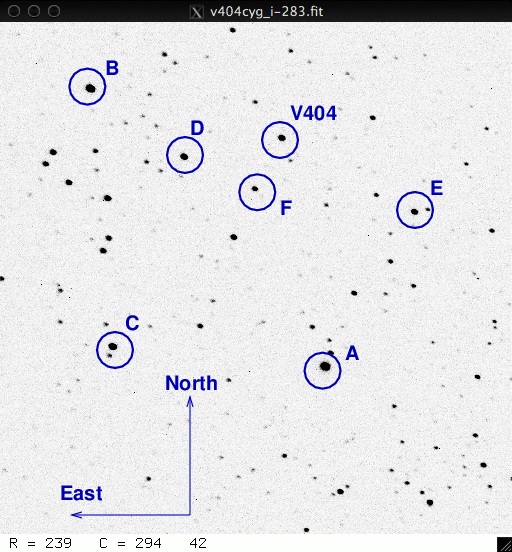
On the night of June 19/20, 2015, I observed the cataclysmic variable star V404 Cyg, which had just recently been noticed to be in an outburst state. Lots of people seemed interested in it
I decided to join the fun. Who knows how long this active phase will last? Since one of the early reports mentioned that the star was relatively bright in the red (varying between magnitudes 12 and 14), I made measurements through the I-band filter. Perhaps that will make it easier for others to use my data.
The main setup was:
Notes from the night
This object, originally noted as Nova Cyg 1938, is a Low-Mass X-ray Binary (LMXB) which is thought to consist of a black hole of roughly 10 solar masses and an ordinary star of about 0.6 solar masses. A good summary can be found at AAVSO Alert Notice 520 ; one paper from many, picked at random, is Characterizing the quiescent X-ray variability of the black hole low-mass X-ray binary V404 Cyg, which suggests that a jet is responsible for most of the radiation emitted during quiescence. The binary has an orbital period of about 6.47 days.
Here's a chart of the field of V404 Cyg, which is at
RA = 20 24 03.83 Dec = +33 52 02.2 (J2000)
The chart is about 12x12 arcminutes.

Among the labelled stars are
B TYC 2693-1473-1 F UCAC4 620-101865
The star "F" has an Ic magnitude of 11.967 +/- 0.018 according to AAVSO sequence 15088BFS.
Below is a graph showing the sky brightness as a function of time during the observing run. I kept making measurements right into dawn, as you can see; the Sun was only 6 degrees below the horizon when I stopped. The small drop in sky brightness around 2193.77 marks the moment when the clouds moved away.

Below is a graph showing the FWHM as a function of time during the observing run. I refocused the telescope at 2193.73. The large scatter is not caused by the focus or seeing, per se, but by frequent trailing and small irregularities in the tracking.

Using aperture photometry with a radius of 4 pixels (radius of 5.7 arcsec), I measured the instrumental magnitudes of a number of reference stars and the target. Following the procedures outlined by Kent Honeycutt's article on inhomogeneous ensemble photometry, I used all stars available in each image to define a reference frame, and measured each star against this frame.
Sigma-vs-mag plot: V404 Cyg is the big, big, BIG outlier, and one of the brightest stars in the field. Even bright stars have a relatively high scatter (0.005 to 0.008 mag) due to the thick haze.
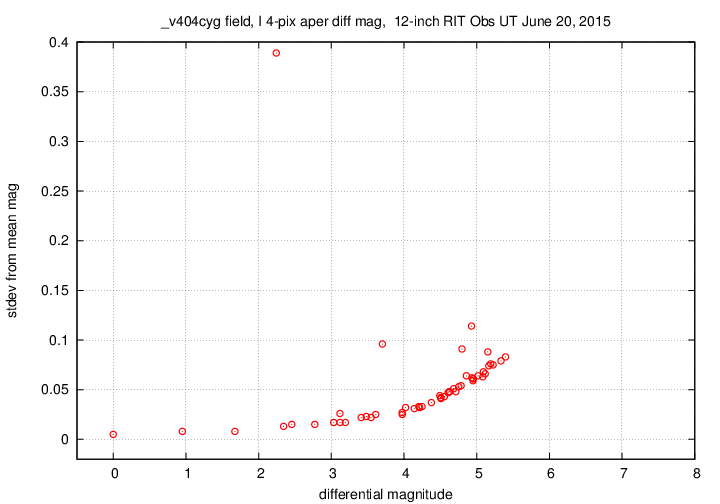
Image adjustment factor: the dramatic drop after 2193.77 is due to the departure of the clouds. The scatter before that time is mostly due to changes in transparency, while the occasional scatter afterwards is due to trailing of the stellar images.
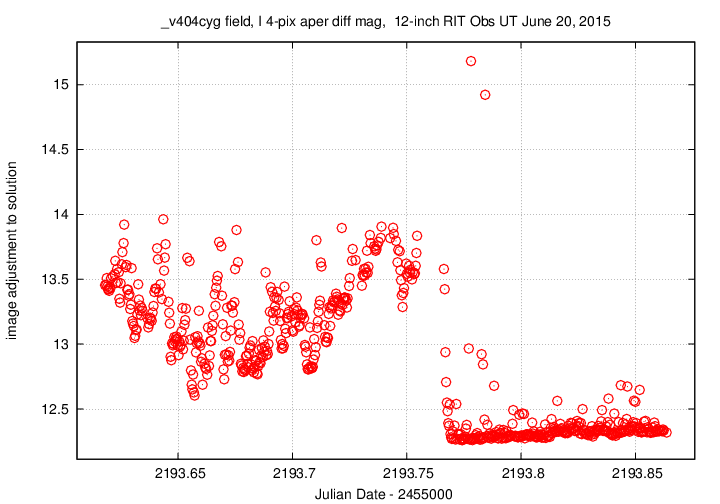
The target, shown in green, shows a crazy variation over the course of the run. The gap was caused when I closed the dome slit briefly to move the panel to the bottom of the slit.
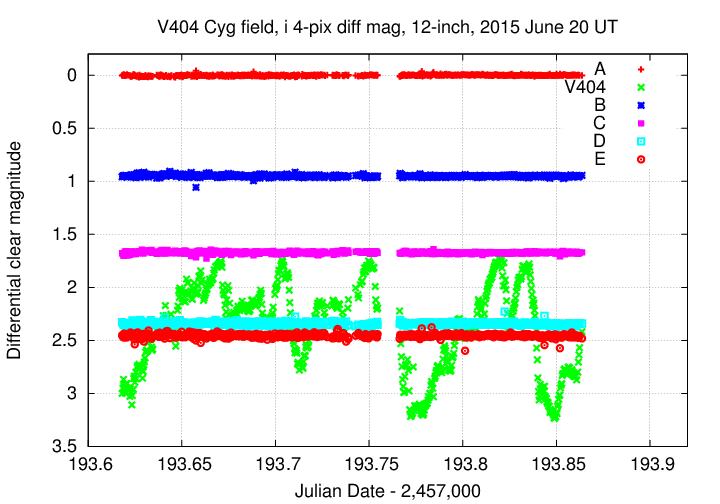
Here's a closeup of V404 Cyg by itself.
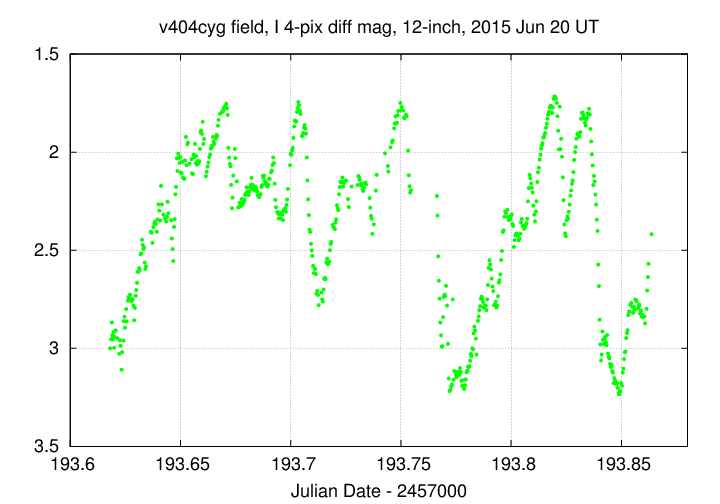
I used the AAVSO's value for the I-band magnitude of star "F" = UCAC4 620-101865 to shift the ensemble magnitudes to the standard I-band scale. You can download my measurements below. A copy of the header of the file is shown to explain the format.
# Measurements of V404_Cyg made at RIT Obs, Jun 20, 2015 UT, # in poor to fair conditions, # by Michael Richmond, using 12-inch Meade and SBIG ST-9E CCD. # Exposures 20 seconds long, I filter. # Tabulated times are midexposure (FITS header time - half exposure length) # and accurate only to +/- 1 second (??). # 'mag' is a differential magnitude based on ensemble photometry # using a circular aperture of radius 7.4 arcseconds. # which has been shifted so UCAC4 620-101865 has mag=11.967 # which is its Ic-band mag according to AAVSO chart 15088BFS. # # UT_day JD HJD mag uncert Jun20.11808 2457193.61808 2457193.62031 11.556 0.019 Jun20.11860 2457193.61860 2457193.62083 11.509 0.019 Jun20.11885 2457193.61885 2457193.62108 11.424 0.018
Last modified 6/21/2015 by MWR.